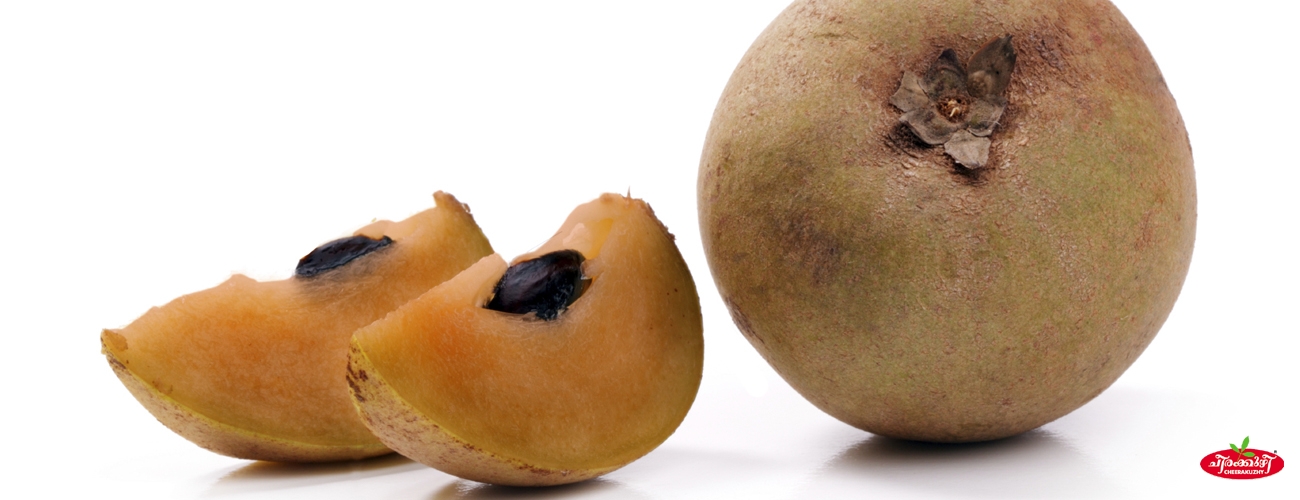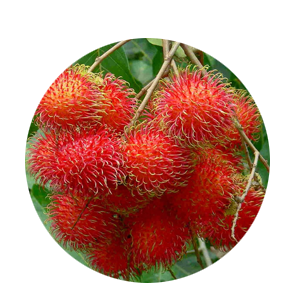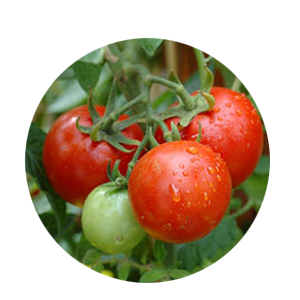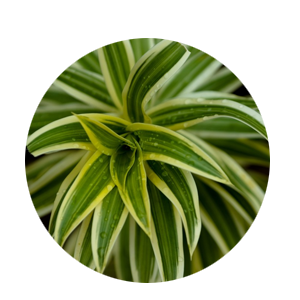Suppotta - Graft - (8x10 bag)

Item Description
GENERAL INFORMATION ABOUT A SAPODILLA/ CHIKKU Manilkara zapota, commonly known as the sapodilla is a long-lived, evergreen tree native to southern Mexico, Central America and the Caribbean. Spanish colonization. Sapodilla can grow to more than 30 m (98 ft) tall with an average trunk diameter of 1.5 m (4.9 ft). The average height of cultivated specimens, however, is usually between 9 and 15 m (30 and 49 ft) with a trunk diameter not exceeding 50 cm (20 in).The ornamental leaves are medium green and glossy.They are alternate, elliptic to ovate, 7–15 cm (2.8–5.9 in) long, with an entire margin. The fruit is a large berry, 4–8 cm in diameter.Inside, its flesh ranges from a pale yellow to an earthy brown color with a grainy texture akin to that of a well-ripened pear. Each fruit contains one to six seeds.The seeds are hard, glossy, and black, resembling beans, with a hook at one end that can catch in the throat if swallowed. The fruit has an exceptionally sweet, malty flavor. The unripe fruit is hard to the touch and contains high amounts of saponin, which has astringent properties similar to tannin, drying out the mouth. HELTH BENENIFTS OF SAPODILLA Sapodilla is one of the high-calorie fruits; 100 g provides 83 calories (almost same as that of calories in sweet potato, and banana). Additionally, it is an excellent source of dietary fiber (5.6 g/100g), which makes it a good bulk laxative. This fiber content helps relieve constipation episodes and help protect mucosa of the colon from cancer-causing toxins. The fruit is rich in antioxidant polyphenolic compound tannin. Tannins are a composite family of naturally occurring polyphenols. Research studies suggest that tannins possess astringent properties, and shown to have potential anti-inflammatory, antiviral, antibacterial, and anti-parasitic effects. Hence, these compounds may found useful applications in traditional medicines as antidiarrheal, hemostatic (stops bleeding) and as a remedy for hemorrhoids. Here are some health benefits 1.Improves Eye Vision in Old Age 2.Energizes the Body 3.Improves Digestive Tract Health 4.Prevents from Cancer 5.Strengthens Bone 6.Provides Relief from Constipation 7.Stops Blood Loss from Piles 8.Provides Relief from Insect Bite 9.Prevents from Bacterial Infection 10.Destroys Free Radicals and Boosts Immune System 11.Regularize Functioning of Digestive System 12.Effective in Diarrhoea 13.Improves Mental Health and Keeps Stress Free 14.Provides Relief from Respiratory Tract Disorders 15.Removes Bladder and Kidney Stones 16.Promotes Weight Loss 17.Removes Toxin from Body 18.Prevents Water Retention in Body 19.Cures Tooth Cavities 20.Regulates Blood Pressure 21.Prevents from Anemia 22.Prevents from Pulmonary Problems 23.Relieves Muscle Spasm 24.Benefits of Chikoo during Pregnancy 25.Energizes the Body
Maintanance, Disease Management And Yielding
MAINTANACE OF THE PLANTATION Once a plantation has been established, the work should not be considered finished. It will be necessary, for example, to protect the plantation against weather, fire, insects and fungi, and animals. A variety of cultural treatments also may be required to meet the purpose of the plantation. FERTILIZING About 50 kg. of farmyard manure , 1 kg. N (1.5 kg. in case of rainfed varieties), 0.5 kg. P2O5 and 0.5 kg. K2O /tree/year are applied and the dose is regulated on the basis of age of the tree and status of nutrients in soil especially of P and K. Under rainfed conditions, fertilizers are applied before the onset of monsoon. Under irrigated conditions, it should be applied in two splits, one half at the beginning of monsoon and the remaining half in the post-monsoon period (September-October). WATERING AND WEED CONTROL Young sapodilla trees should be watered regularly until fully established. In dry western climates, water mature trees deeply at least every one or two weeks. Desert gardeners may have to water more frequently. Mulch the soil around the trees to conserve moisture. Weeding is also very important. Remove all weeds 1.5 meter around the plant. PRUNING AND SHAPE OF TREE Pruning is done to expose the trees to sunlight and to remove the dead and diseased branches. It is mainly done to regulate the vegetative growth in order to improve the productivity and quality of fruits. PEST & DISEASE FOR SAPODILLA TREES Every fruit tree has the future potential for disease and insect damage. Factors such as location and weather will play a part in which issues your tree encounters. If available, disease-resistant trees are the best option for easy care; and for all trees, proper maintenance (such as watering, fertilizing, pruning, spraying, weeding, and fall cleanup) can help keep most insects and diseases at bay. HARVESTING YOUR SAPODILLA The fruits are hand picked or harvested with special harvester which has a round ring with a net bag fixed onto a long bamboo.The crop bearing commences from fifth year. As such inter cropping like vegetables may be taken up in the first four years of the project make it viable. In high density plantation, the production increases from 4.0 tonnes/acre in the fifth year to 6.0 tonnes/acre in the 7th year. Thereafter, the yield stabilizes at 8.0 tonnes/acre from 8th to 15th year.
- Propogation Method : Grafting
- Plant Climate : Sub Tropical, Normal, Hot, Cool, Tropical
- Plant Height : 3-4 feet
- Plant Weight : 3.5kg
- Plant Polybagsize : 8x10
Related Images
- Botanical Name : Manilkara Zapota
- Malayalam Name : Suppotta
- English Name : Chikku
The flesh with soft brown of the sapodilla tastes a bit like a sweet mix of brown sugar and root be
Planting Instructions
PLANT THE RIGHT TREE AT RIGHT PLACE Growing space both above and below ground should be considered when selecting a tree to plant. Too often allowances are not made for the increased size of the tree when it matures. Most problems can be avoided by selecting the proper tree species for the available planting space. GENERAL TIPS 1. Plant at least 6 to 10 meter from main overhead utility wires on street or to your home. 2. Plant at least 7 meter from a building. 3. Plant at least 2 meter from sidewalks, driveways, patios and fences. 4. Plant at least 7 to 15 meter from other large trees. 5. Plant at least 7 meter from small trees. 6. Prioritize your tree planting with the sun’s direction to maximize shade by planting on the southwestern and western sides of your home BASIC PARAMETERS TO PLANT A SAPODILLA 1. Soil : The sapodilla grows naturally in the calcareous marl and disintegrated limestone of its homeland. Nevertheless, it flourishes also in deep, loose, organic soil, or on light clay, diabase, sand or lateritic gravel. Good drainage is essential, the tree bearing poorly in low, wet locations. It is highly drought-resistant, can stand salt spray, and approaches the date palm in its tolerance of soil salinity, rated as ECe 14.20. 2. Planting Distance : For Commercial Plantation:- On an average, 130 plants are planted at a spacing of 8.5m. High density planting with a spacing of 5x5 m. upto the age of 13 years has been adopted successfully. For Home Garden: -In a home garden generally we are planting one or two sapodilla trees along with other species of fruit plants. So it is better to keep minimum 7 meter distance from other plants to plant a sapodilla. 3. Pit size : Minimum 60cm width X 60cm Breadth X 60cm depth 4. Sunlight : 100% sunlight is best but can grow up to 50 % shade 5. Watering: During dry weather, initially water the plant once in two days and after one month of planting water every 7 to 10 days during the first year. TEN TIPS FOR PLANTING A SAPODILLA TREE 1. Dig a hole/pit 3 to 4 times wider than the container (Normally 60cm X 60cm X60cm is recommended). Fill the pit with top fertile soil to allow for proper root growth. Avoid clay type soil to refill the pit. 2. Add 250 gm Rock Phosphate or Born Meal and 3 to 5 kg Cow dung or compost in the top soil of the pit and mix it thoroughly (Thorough mixing of manure with soil is very important because direct contact of manure with the roots of the plant will cause the damage of roots and plant). 3. Make a small hole in the pit and carefully remove the plant from the container/pot or poly bag keeping the soil around the roots intact. Don‘t yank the plant out of the pot or poly bag as this can separate the roots from the tree. Poly bags can be easily removed by cutting it by a knife and pots can be removed easily by hitting slightly at the top edge of the pot. 4. Set the plant in the middle of the hole. Avoid planting the tree too deep. Keep the base of the trunk is slightly above ground level. Using some soil, secure the tree in a straight position, then fill and firmly pack the hole with the original soil, making sure there aren‘t any air pockets. 5. If the plant is Grafted or Budded make sure the grafted or budded portion of the plant is above the soil. Do not allow to touch the grafted or budded portion in the soil as it burns the skin of the plant. 6. Create a water-holding basin around the pit and give the plant a good watering. After the water has soaked in, spread protective mulch 2–4 inches deep in a 3-foot diameter area around the base of the tree, but not touching the trunk. Also provide a stich as a support for the plant, if needed. 7. The soil and mulch around your plant should be kept moist but not soggy. During dry weather, initially water the plant once in two days and after one month of planting water every 7 to 10 days during the first year. 8. Remove any tags and labels from the tree as these will affect the tree as it grows. You may need to prune any broken or dead branches. For Budded or Grafted plants it is very important that do not allow the growth of off shoots under the grafted/budded portion. Allow the growth of budded/grafted scions only. 9. Do not use chemical fertilizer or any other chemicals on your newly planted trees. Such products will kill your young trees. If needed you can add chemical fertilizers in small quantity (generally below 100gm) after two to three months of planting with sufficient irrigation. 10. Do not over water or allow rain water so much that you see standing water in the pit area of the plant. It will damage the plants roots and results the die of your plant.
















